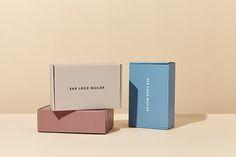Consistency Challenges in Custom Advertising Boxes

Maintaining brand consistency is essential in crowded marketplaces. Professionalism comes through custom advertising boxes, which build trust and create consistent brand recognition. Advertising boxes serve two functions: they are packaging tools and essential brand contact points, which demonstrate business self-expression. Establishing perfect alignment between each advertising box and its brand identity requires more effort than many business leaders anticipate.
Businesses struggle to maintain consistent harmony throughout their batch production and marketing platforms. Businesses encounter several essential obstacles that prevent them from keeping brand consistency across custom advertising boxes.
Multiple Suppliers, Multiple Outcomes
Many brands make a frequent mistake when they obtain their packaging materials from various supplier networks. Supplier interpretation differences from design specifications create inconsistencies that appear in box color schemes and materials, as well as finishing treatments. The dissimilarities become apparent at both stackups and display arrangements for boxes in retail shows or promotional displays. Brand dilution occurs in the long run when firms cut costs short term by purchasing custom-printed advertising boxes from various vendors. Working exclusively with one reliable supplier who knows your brand requirements helps minimize this type of problem effectively.
Inconsistent Color Reproduction and Materials
Brand identity heavily depends on color as a fundamental component. A tiny alteration in hue leads to significant changes in how the audience perceives the product. To achieve a uniform color appearance, all packaging boxes need precise Pantone matches and calibration of printing equipment. The same shade proves difficult to achieve during separate production runs or when using different manufacturing facilities. Brands engaging in wholesale advertising box purchases need vendors to maintain strict color standards, as well as quality control mechanisms that eliminate packaging visual mismatches.
Design Elements Get Lost in Translation
Your packaging design should display your brand's identity and verbal communication style. Moving digital box designs to become physical products does not always produce successful outcomes. Typography reduces in size in the process, and logos move positions while some graphical content requires trimming. Design elements and dieline templates get lost due to poor interfaces between design professionals and printing services. Businesses need to use prototypes along with pre-production samples in order to ensure design integrity before moving toward complete manufacturing of advertising packaging boxes.
Internal Misalignment on Brand Guidelines
The primary obstructions to brand consistency emerge from within organizations. The challenge arises from how departments such as marketing and product development, and procurement handle their comprehension of brand guideline standards. Suppliers and printers receive conflicting information from the company due to this condition. The creation of an authoritative brand guideline document, followed by team-related reference, helps resolve most brand consistency issues. Strategic importance focuses on custom gift packaging boxes because text alignment and imagery placement, and sizing requirements should match consistently between marketing efforts.
Changing Trends vs. Brand Foundation
Brands find it appealing to use design trends just to stay fresh. When brands make excessive changes to their core identity, their consumer audience becomes harder to understand. A packaging transformation requires the maintenance of fundamental brand trademarks. Limited-edition strategies that maintain core brand appearance help achieve balanced transformations. The dual promotional and protective purposes of cardboard advertising boxes apply most strongly to retail environments. Design experiments should preserve brand-consistent materials and structural elements.
Overlooking Print and Production Variables
All manufacturing procedures have established boundaries that manufacturers must accept. The outcome of production will suffer from deviations in printing methods, together with box-folding techniques and precision measurement of cuts. During product development, brands need to collaborate closely with packaging engineers to integrate key production factors. Design flaws occur by disregarding these factors, which create damaged logos along with problematic layout modifications. The logo must receive focused attention when you order advertising boxes with the logo because it serves as the design centerpiece, and failure to represent it properly can be disastrous.
The Complexity of Customization Features
The elegance of fancy packaging elements, such as windows and ornamented designs and foil stamping and cut-out patterns, introduces additional complications to the process. Batches can develop irregularities when these design elements receive insufficient attention in their management activities. A small variation exists between window placement and dimensions until strict controls are established to maintain consistency. Manufacturers who use advertising boxes incorporating windows need to confirm that special features will not damage visual unity or structural quality. The process requires both detailed prototyping steps and a comprehensive quality assurance inspection program.
In The Sum
A business strategy exists behind the requirement of maintaining uniformity throughout custom advertising boxes. Brand trust stays intact while customer experience gets better, and each customer interaction reinforces brand identity through consistent branding. All product details matter when you either print logos or install die-cut windows on your pieces. A business can maintain brand-truthful packaging through proactive vendor management alongside team collaboration and strict quality control protocols. The process of overcoming packaging challenges leads to brand reliability and consumer recognition,n which creates lasting brand trust with customers.
- Art
- Causes
- Crafts
- Dance
- Drinks
- Film
- Fitness
- Food
- Games
- Gardening
- Health
- Home
- Literature
- Music
- Networking
- Other
- Party
- Religion
- Shopping
- Sports
- Theater
- Wellness


